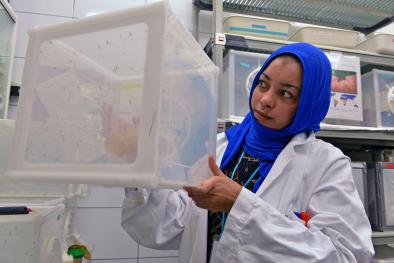Science Source
County-Scale Distribution of Ixodes scapularis and Ixodes pacificus (Acari: Ixodidae) in the Continental United States
- States that since 1991, when standardized surveillance and reporting began, Lyme disease case counts have increased steadily in number and in geographical distribution in the eastern United States
- Updates the distribution of I. scapularis and I. pacificus—the primary Lyme disease vectors in the east and western US respectively—from a map published in 1998 to better understand the changing landscape of risk of human exposure
- Finds the presence of I. scapularis has now been documented from 1,420 (45.7%) of the 3,110 continental United States counties, as compared with 111 (3.6%) counties for I. pacificus
- Combined, these vectors have been identified in a total of 1,531 (49.2%) counties spread across 43 states—a 44.7% increase in the number of counties that have recorded the presence of these ticks since the previous map was presented in 1998, when 1,058 counties in 41 states reported the ticks to be present
- Finds the majority of county status changes occurred in the North-Central and Northeastern states, whereas the distribution in the South remained fairly stable
- Finds that two previously distinct foci for I. scapularis in the Northeast and North-Central states appear to be merging in the Ohio River Valley to form a single contiguous focus
- Documents a shifting landscape of risk for human exposure to medically important ticks
Related Content
Science Source
| The Lancet
El Niño and climate change—contributing factors in the dispersal of Zika virus in the Americas? - The Lancet
Shlomit Paz, Jan C Semenza
Science Source
| Proceedings of the National Academy of Sciences
Global risk model for vector-borne transmission of Zika virus reveals the role of El Niño 2015
Cyril Caminade, Joanne Turner, Soeren Metelmann et al
Headline

Apr 7, 2017 | Carbon Brief
Zika outbreak ‘fuelled by’ El Niño and climate change
Science Source
| MMWR. Morbidity and Mortality Weekly Report
Vital Signs: Update on Zika Virus–Associated Birth Defects and Evaluation of All U.S. Infants with Congenital Zika Virus Exposure — U.S. Zika Pregnancy Registry, 2016
Megan R. Reynolds, MPH; Abbey M. Jones, MPH; Emily E. Petersen et al


